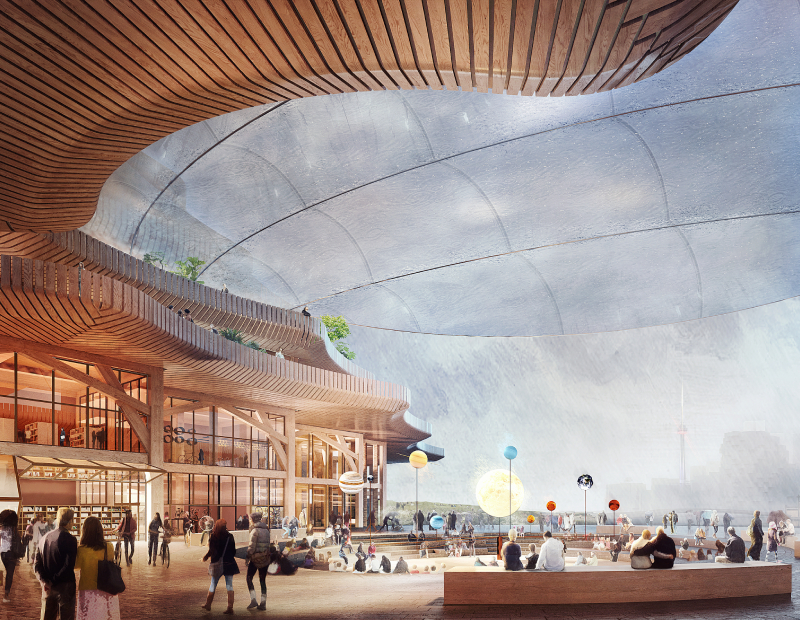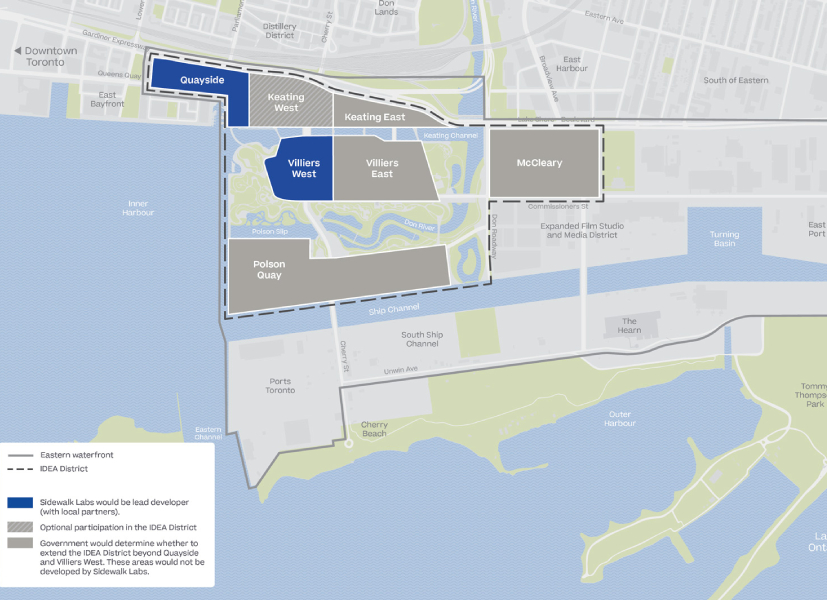Sidewalk Labs Abandons Toronto Waterfront Megaproject
More than two years into the Quayside project, the Google affiliate announced it will be pulling back, citing global economic uncertainty.
After partnering in 2017 with Waterfront Toronto, a federal-provincial-municipal agency, to develop the IDEA District megaproject, Alphabet’s Sidewalk Labs has announced that it will no longer pursue the development. In light of the current economic conditions brought by the coronavirus pandemic, the Google affiliate, which had opened a 30-person office on the waterfront, considered that the crisis has made the smart city-within-a-city project financially unsustainable.
READ ALSO: Is CRE Asking the Right Questions About Smart City Investment?
The Quayside neighborhood, the first phase of the overall district, started as a redevelopment project of a 12-acre former industrial site and was meant to include 2,600 residential units, with 40 percent of that reserved for below-market rates. The mixed-use project was also supposed to feature 870,000 square feet of commercial space, including 60,000 square feet set aside for an elementary school and a daycare facility.
Touted as the world’s first all-mass timber neighborhood, the project called for a focus on sustainability and modular building technologies, while also reducing construction costs and time. A focus on flexibility wasn’t the plan only for the skyscrapers, but also the pavement. According to past company presentations, the firm wanted to use hexagon-shaped pavers that could change the way streets are used, as parts of public space could be reconfigured, allowing streets to be reordered easily.
“I believe that the ideas we have developed over the last two-and-a-half years will represent a meaningful contribution to the work of tackling big urban problems, particularly in the areas of affordability and sustainability,” Sidewalk Labs CEO Daniel Doctoroff wrote in a post announcing the decision.
IDEA District
The overall vision for the waterfront included a second phase, dubbed River District, a 62-acre area encompassing five neighborhoods: Villiers West, Villiers East, Keating East, McCleary and Polson Quay. In its 1,500-page development plan, Sidewalk Labs proposed to invest as much as $1.3 billion to kick off the real estate part of the project.
READ ALSO: The Mind Behind Billion-Dollar Megaprojects
The firm had made it clear that any plan was dependent on also utilizing an adjacent parcel of land, known as West Villiers, anchored by a new Urban Innovation Institute, where Google was also planning on relocating its Canadian headquarters.
In 2017, President Justin Trudeau stated that the area could become a “thriving hub for innovation and a community for tens of thousands of people to live, work and play.” According to the master plan, the live-work approach of IDEA District could have resulted in as many as 3,900 Quayside jobs and 9,000 new positions in Ontario overall.
Controversies
The smart-city project wasn’t controversy-free. Some residents opposed it, citing concerns over privacy, intellectual property, the amount of control a private company should have over public land, as well as the scope of the project.
IDEA District also faced questions over data protection. A year into the project, Dr. Ann Cavoukian, a privacy expert, resigned her consulting role on the initiative. Cavoukian wrote in her resignation letter that she imagined the project would create “a Smart City of Privacy, as opposed to a Smart City of Surveillance.” Her comments came after she had learned that, despite initial promises to keep the data collected unidentifiable, the company would have been able to allow third parties access to identifiable information gathered in the district.









You must be logged in to post a comment.